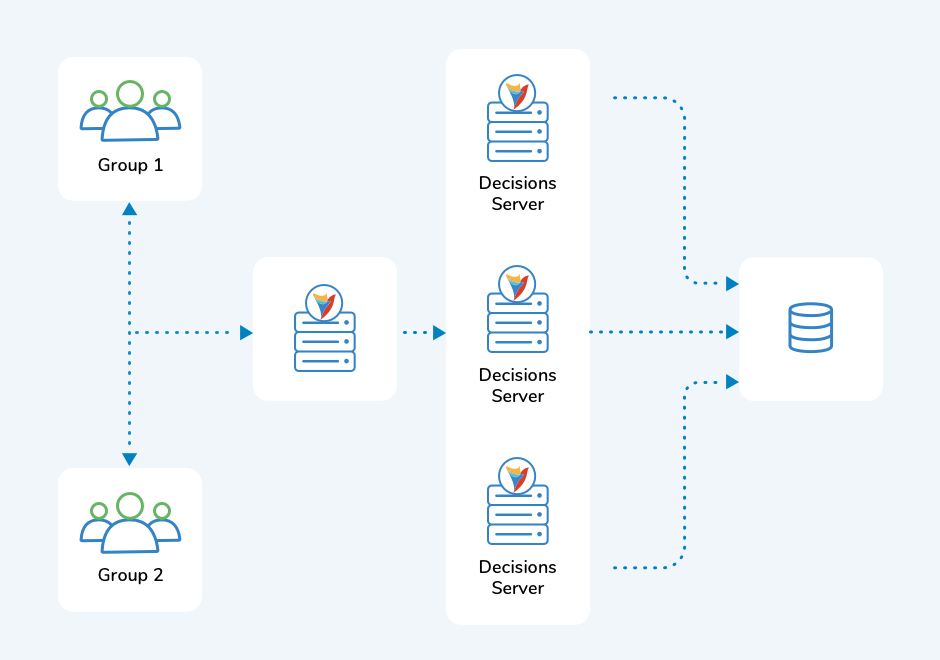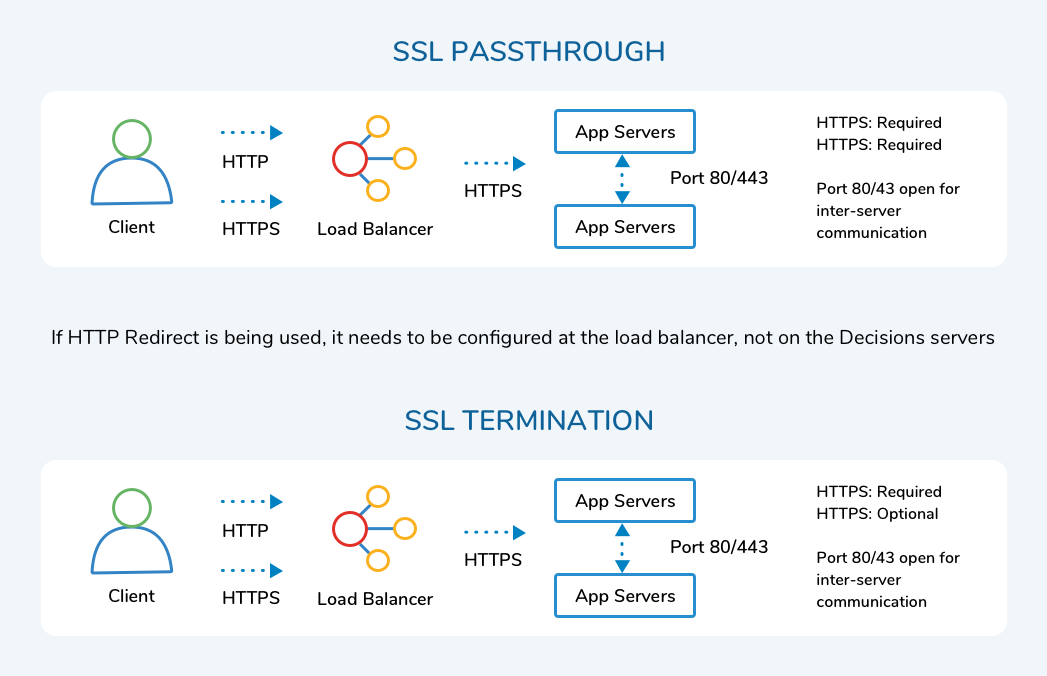Load balancers are commonly deployed when multiple application servers are used with Decisions. A load balancer acts as a primary point of contact so that all of the application servers appear the same to end-users.
Load balancers internally route data to each of the servers in a Cluster based upon criteria configured at the load balancer. The following document discusses and explains some of the common uses for a load balancer in a Decisions-based server architecture.
If available, Cookie Based Session Persistence is recommended; this uses a cookie to uniquely identify a session and later reference that cookie to push the connection to the appropriate server.

SSL Passthrough
The use of SSL Passthrough at the load balancer is recommended over SSL Termination as termination does not allow for the improvements and benefits of HTTP/2 to be utilized.
For more information on the differences between HTTP/1.1 and HTTP/2, please visit this comparative article.

Azure Application Gateway/Cookie-Based Session
The following sections outlines the requirements for each specific configuration.
Backend Pool of VMs with IIS/Decisions Application
- Configured as a Decisions Cluster
- No SSL Termination on the IIS side (termination is completed on the AAG)
- SSL Offloading
- Increased performance from backend pool to AAG
Azure Application Gateway
- SSL Termination
- HealthCheck configuration
- HTTP/HTTPS redirect/rules configuration
- Requires separate Virtual Networks within the same address space of the backend pool
- Cookie Session Affinity configuration
Decisions Configuration Supporting AAG
- Requires configuration for Cookie Affinity